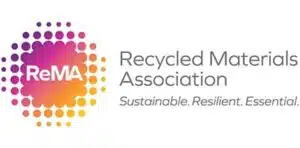Michael E. Wilson, Past Chief Executive Officer of the Automotive Recyclers Association, now an Executive Consultant at Elevon Advisors LLC based in the US, provides his opinion on how there is revenue to be made through OEMs embracing greater value-retention practices.

In the automotive sector, prospective revenue streams can be achieved by original equipment manufacturers (OEMs) that embrace greater value-retention practices for parts utilization beyond traditional service lifecycles.
The basic tenets of value-retention found in circular economy principles seek to recover all products, components and materials at their highest utility and value. New revenue opportunities for OEMs derive from those who incorporate circular economy philosophies such as direct reuse, repair, refurbishment, reconditioning and remanufacturing. These practices help to retain value through enhanced resource efficiency and decreased environmental impacts.
‘These practices help to retain value through resource efficiency and decreased environmental impacts.’
Motor vehicle age is rising
Today, motor vehicles stay on the roads and highways in the United States much longer than previously. This provides a replacement part market for repairs much different than 25 years ago. Back then, the average age of a motor vehicle was 8.1 years. Now, the average age of an American motor vehicle fleet has risen to an all-time high of 11.9 years. The average motor vehicle’s age might likely increase at a faster rate in the coming years due to economic struggles caused by COVID-19.
Opportunity for automakers
This increased parts demand from a fleet of older vehicles provides an opportunity for automakers to collaborate with other industry partners. Through active education and awareness initiatives, automakers can cultivate greater market support of part alternatives that reduce the environmental footprint of their vehicle components and operations. These efforts can also enhance manufacturers’ ability to meet greenhouse gas emission commitments and other environmental goals, such as meeting regulatory compliance with sustainability and circular economy requirements in markets worldwide.
United Nations study
Each year, more than 25 million motor vehicles reach the end of their service life around the globe. In the United States, over 95% of the 11-15 million scrapped vehicles annually enter an extensive recycling infrastructure that includes automotive parts recyclers, core buyers, remanufacturers, and shredders. In a United Nations study released several years ago entitled, ‘Re-Defining Value, The Manufacturing Revolution – Remanufacturing, Refurbishment, Repair and Direct Reuse in the Circular Economy’, it was noted that compared to traditional OEM new production, remanufacturing can reduce new material requirements by between 80% and 98%; comprehensive refurbishing saved slightly more materials, on average, between 82% and 99%. Repair saved an even higher share, between 94% and 99%; utilizing direct reuse essentially does not require any inputs of new materials.
‘Circular economy principles provide competitive advantages’
In 2016 research, the professional service company, Accenture, determined that “potential revenue of selected circular economy business models for automotive companies could more than double by 2030, growing by $400-600 billion … making circular economy business models a major profit pool in the automotive industry.” This additional value is driven by circular economy principles.
Enhanced efficiencies
Accenture noted that automotive manufacturers could achieve enhanced efficiencies through a combination of vehicle design, manufacturing, distribution and product life extension.
Revenue opportunities
Broader circular economy views by OEMs will broaden network and revenue opportunities. OEMs, such as Groupe Renault, has supplemented their circular capabilities by working with third parties. This supports a closed-loop recycling network of independent automotive recyclers and dismantlers to significantly improve their competitiveness in the marketplace.
Reuse, repair or remanufacture
Instead of planning for disposal at the end of its products’ lives, Renault strategizes to reuse, repair or remanufacture. The last generation and next generation of vehicles become part of a circular production process. End-of-life vehicles are dismantled to procure parts and materials so they can be used again as a resource for spare parts and further recycling of components and materials.
‘Collaborative Relationships between OEMs and Independent Automotive Recyclers’
Another automotive manufacturer that has entered the closed-loop spare parts market is Encory GmbH. This joint venture between BMW Group and ALBA Group, started in 2016, is returning used automotive parts harvested from their authorized dealer service and repair networks back into circulation.
This reconditioned spare parts market option has the potential to address a significant gap in current authorized workshops where currently new parts can be the only recognized service/repair option. While remanufactured parts have long provided an alternative option for traditional mechanical components, the increased range of electronic components such as anti-lock braking systems, window regulator modules and other units in today’s vehicle fleets often steer consumers away from authorized service and repair centers to opt for used components or aftermarket parts provided by independent providers to address the continued mobility of their vehicles.
An existing global network of professional automotive recyclers and dismantlers stand ready to work in concert with automotive manufacturers such as Renault and BMW Group with their emerging dealer network’s utilization of reconditioning parts and components. Now is the time to build bridges between these vital automotive entities to maximize a more sustainable service and repair options that save valuable resources and energy.
Business relationships
It is important for OEMs and professional automotive recyclers to cultivate business relationships to collaboratively lessen barriers and embrace utilization of existing production, distribution, and collection infrastructure and networks to address product and material loops within the supply chain.
‘Around the world, automotive manufacturers should embrace, providing consumers a choice between alternative OEM parts sourced from circular economy principles and newly produced OEM parts.’
Consumer relationships
Around the world, automotive manufacturers should embrace, providing consumers with a choice between alternative OEM parts sourced from circular economy principles and newly produced OEM parts. When integrated into an automaker’s network, these resource-efficient, alternative parts extend and strengthen valuable consumer relationships and draw from new, diverse market segments. Additionally, automakers may leverage existing production, logistics, service arrangements and distribution infrastructure in implementing these strategies.
Marketplace competition
It is imperative that consumers have access to marketplace competition that ensures efficient repair and maintenance of motor vehicles globally. A solid commitment and investment in circular economy concepts will not only benefit consumers and automotive recyclers and remanufacturers but will also open doors to new revenue streams for other stakeholders in the motor vehicle service and repair marketplace.
About the author
Michael E. Wilson, past Chief Executive Officer of the Automotive Recyclers Association.
As the Automotive Recyclers Association’s (ARA) chief executive from 2007 through 2018, Wilson played a key role in the professional automotive recycling industry in the United States and around the globe. Under his leadership, the ARA emerged as a major force in promoting effective competition in the international markets for replacement automotive parts.
Wilson lives in the Washington, D.C. metro area and can be reached at michaelewilson01@gmail.com











